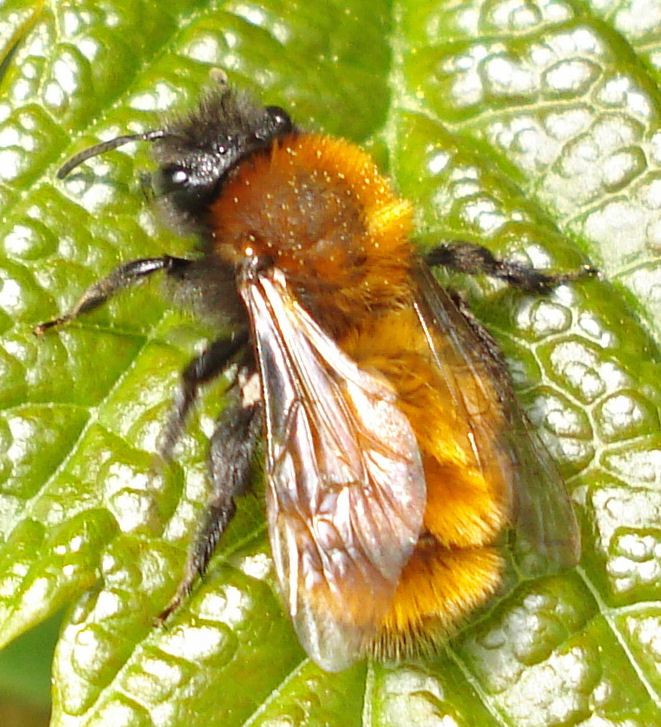
Mining Bees
Mining bees, belonging to the genus Andrena, are solitary ground-nesting bees that play an important role as early spring pollinators. These medium-sized bees, often covered with dense hair, are usually brown, black, or reddish in color. Unlike honeybees or bumblebees, mining bees do not live in colonies; instead, each female constructs her own nest by burrowing into sandy or loose soil, creating small tunnels where she lays her eggs. These nests are often found in lawns, gardens, or meadows, sometimes appearing in groups when conditions are favorable, though each female works independently. Mining bees are gentle and non-aggressive, rarely stinging unless severely provoked, making them safe neighbors for humans and pets. Their importance lies in their pollination services, as they emerge in early spring to pollinate fruit trees, wildflowers, and other plants at a time when few other pollinators are active. Females gather nectar and pollen to provide food stores for their larvae, ensuring the survival of the next generation. Despite their nesting habits, they do not damage property or harm soil; in fact, their digging helps aerate the ground. Protecting natural habitats and avoiding pesticide use are simple ways to support mining bee populations and promote healthy ecosystems.
